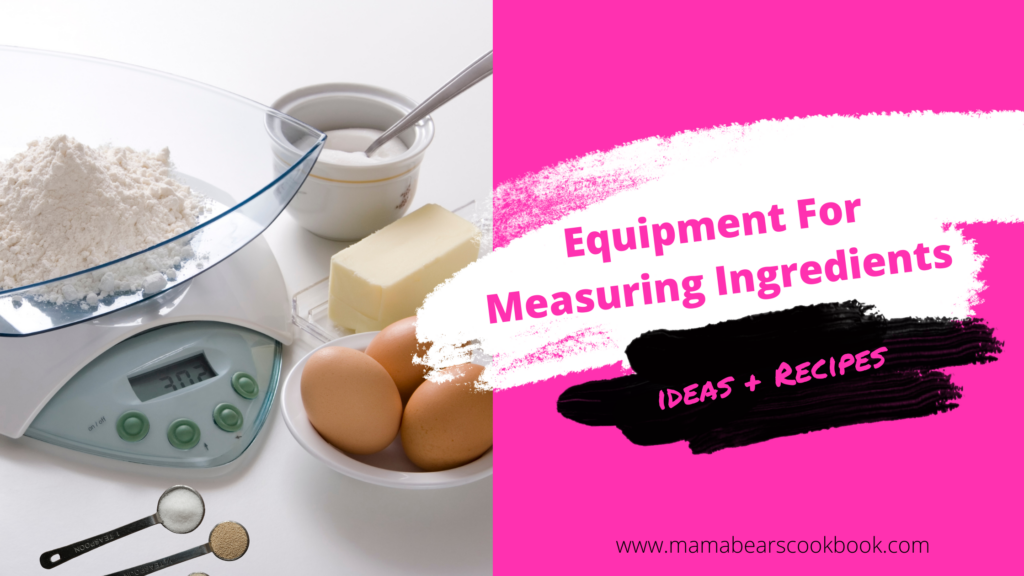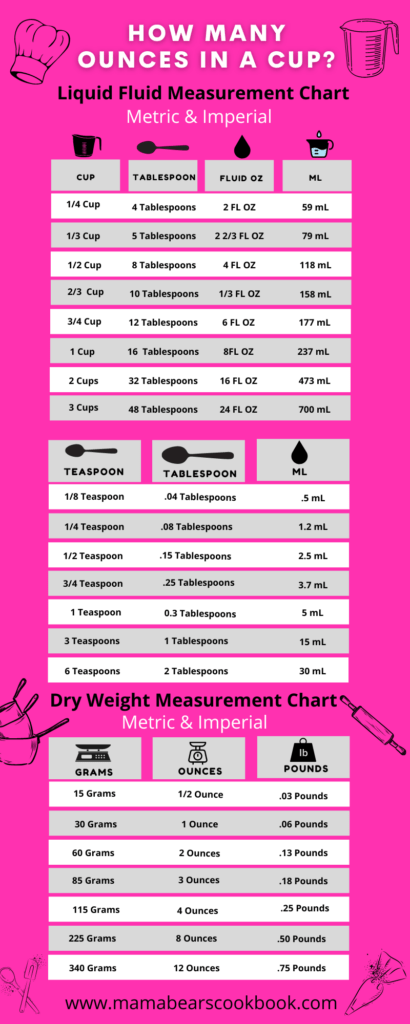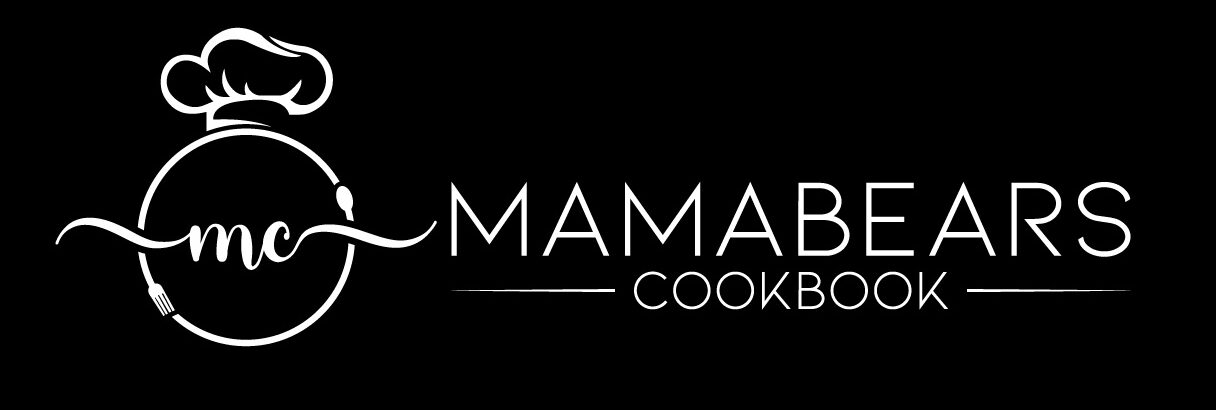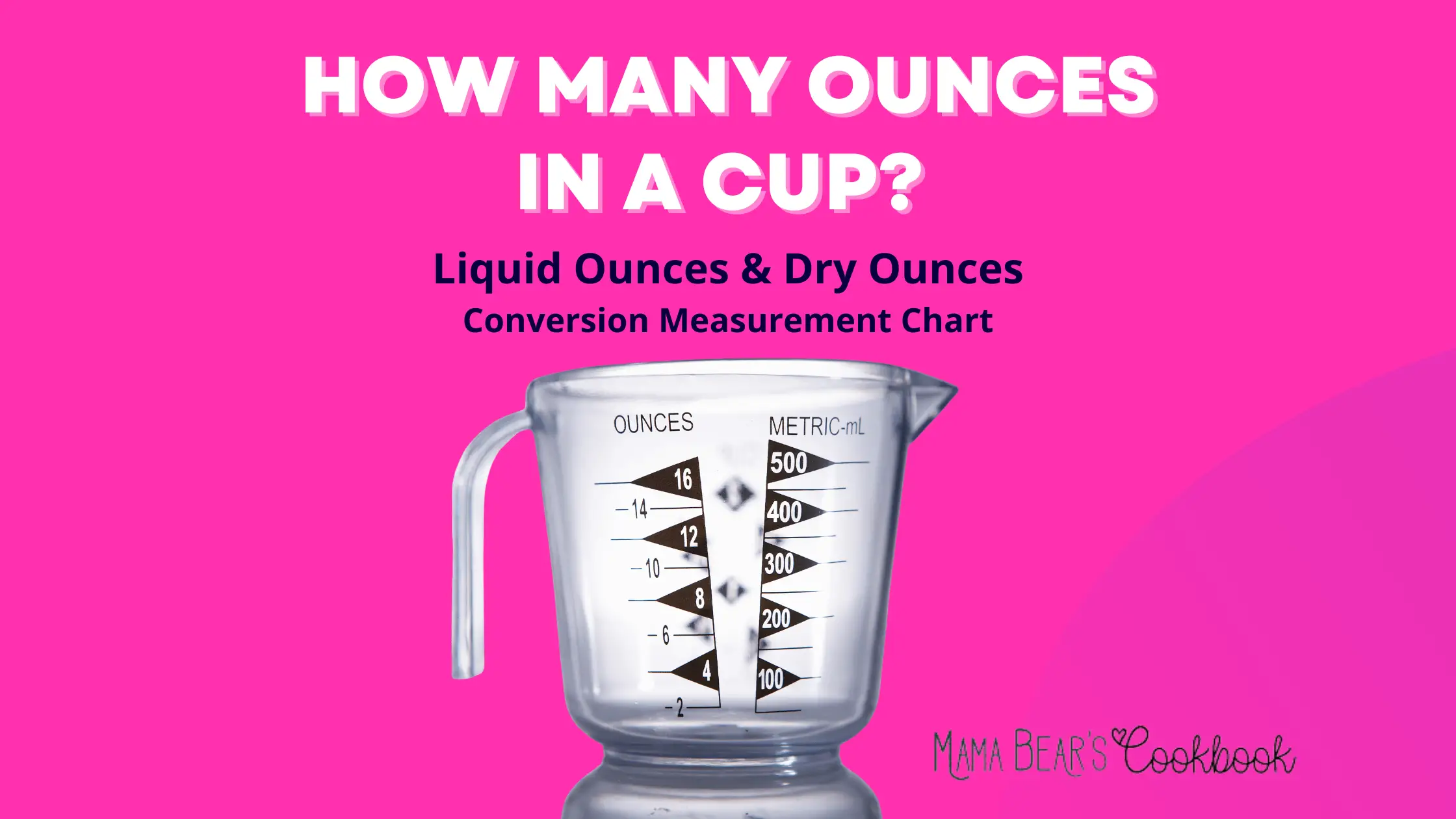Do you ever wonder how many ounces are in a cup? Wonder no more! In this blog post, we will discuss the different types of ounces and how to properly measure them. Ounces are a unit of measurement used to quantify volume or weight. There are fluid ounces and dry ounces – both have different values depending on the substance being measured. We will also cover other common liquid measurements, such as liters and gallons. So whether you’re wondering how many ounces in a coffee mug or how many liters are in a gallon, we’ve got you covered!
Types Of Ounces
But first, let’s talk about the different types of ounces. As we mentioned before, there are fluid ounces and dry ounces. However, it’s important to note that the weight of a substance will not necessarily be the same as its volume.
This is why you might see a recipe that calls for “x number of ounces” of a particular ingredient, but doesn’t give a volume measurement. In cases like this, the author is referring to the weight of the ingredient, not its volume. This could also be reversed and asking for a cup measurement but giving the weight in ounces.
So, how can you tell which they mean? Ounces can be a bit confusing, but don’t worry, we’re here to help clear things up!
That said, let’s take a closer look at each type of ounce.
Fluid Ounces

A fluid ounce is a unit of measurement for volume and is typically used for measuring liquids. When measuring dry ingredients, like flour or sugar, you would use the avoirdupois ounce (explained in more detail below). One fluid ounce is equal to about 29.57 milliliters or 0.0296 liters.
In the U.S., recipes will typically call for liquid ingredients using fluid ounces. So, if a recipe calls for one fluid ounce of milk, you would measure out milk until the liquid reaches the one-ounce mark on your measuring cup.
Dry Ounces
The dry ounce is a unit of measurement for weight and is typically used to measure dry ingredients, like flour or sugar. One dry ounce is equal to about 28.35 grams or 0.0143 avoirdupois pounds.
The term “avoirdupois” is used to describe a system of weights that includes ounces and pounds. This system is used in the U.S., as well as many other countries around the world.
When measuring dry ingredients, it’s important to use a food scale for the most accurate measurement. Most measuring cups only measure in fluid ounces, so you would need to convert the dry ounces into fluid ounces.
This brings me to the question I’ve been asked many times before, “how many ounces in a dry cup?”
One dry ounce is equal to about 0.125 of a cup or 29.574 milliliters (ml). So, if you are making our Keto Chocolate Peanut Butter No Bake Cookie recipe and it asks for 1/2 cup peanut butter , you would use 64 grams or half of an avoirdupois ounce.
Here are some common conversions from ounces to cups:
- 16 ounces =one pint or two cups
- 32 ounces = one quart or four cups
- 48 ounces = one-half gallon or eight cups
- 64 ounces = one gallon or sixteen cups
How Many Ounces In A Cup?

- 1 cup = 8 fl ounces; 16 tablespoons; 250 grams
- 3/4 cup = 6 fl ounces; 12 tablespoons; 188 grams
- 1/2 cup = 4 fl ounces; 8 tablespoons; 125 grams
- 1/4 cup = 2 fl ounces; 4 tablespoons; 63 grams
- 2 Cups = 16 fl ounces; 32 tablespoons; 500 grams
What Equipment Do You Need For Measuring?

All you need for measuring is a set of measuring cups and spoons.
Measuring Cups
Measuring cups are typically made of plastic or metal, and they come in a variety of sizes. These cups are used to measure both dry and liquid ingredients. The measurements usually start at one cup (237 ml) and go up to four cups (950 ml).
You might also see measurements in milliliters (ml), which are equivalent to liquid ounces. For example, four cups is the same as 950 ml or 32 fluid ounces.
Now that you know the difference between fluid ounces and dry ounces, as well as how to convert between the two, you’re ready to start measuring!
Here are some quick conversions to keep in mind:
- 16 fluid ounces = 473 milliliters
- 32 fluid ounces = 950 milliliters
- 128 fluid ounces = 3780 milliliters (or one gallon)
- 16 dry ounces = 453.592 grams
- 32 dry ounces = 905.184 grams
- 128 dry ounces = 3620.736 grams (or four quarts)
Measuring Spoons
Measuring spoons, on the other hand, are usually made of metal or plastic, and they also come in a variety of sizes. These spoons are used to measure both dry and liquid ingredients. The most common sizes are:
- teaspoon (tsp)
- tablespoon (tbsp)
- milliliter (ml)
- liter (l)
While the size of a tablespoon varies from country to country, in the United States, one tablespoon is equivalent to three teaspoons or 0.50 fluid ounces. In the United Kingdom, a tablespoon is equal to 15 milliliters.
Food Scale
A food scale is a kitchen gadget that is used to weigh food. They come in a variety of sizes and can be made from a variety of materials, including glass, plastic, and metal. Food scales are an essential tool for anyone who wants to cook or bake with precision.
The main measurement for a food scale is grams. Ounces are also a popular measurement, but they’re not as precise as grams.
When buying a food scale, make sure to get one that is accurate and easy to use. Avoid scales that are difficult to read or have a lot of buttons and features that you’ll never use.
So now that you know the difference between fluid ounces and dry ounces, as well as how many ounces are in a cup, you can be a measuring pro in the kitchen! But before you get started, make sure you have the right equipment on hand. After all, you can’t make a great dish without the proper tools.
How Many Ounces Are In A Cup Of Flour?
Now that you know the difference between fluid ounces and dry ounces, you’re probably wondering how many ounces are in a cup of flour or sugar. The answer to this question depends on whether you’re measuring by weight or volume.
If you’re measuring by weight, one cup of all-purpose flour weighs about four and a half ounces (or 128 grams). One cup of granulated sugar weighs about seven ounces (or 198 grams).
However, if you’re measuring by volume, one cup of all-purpose flour or granulated sugar only weighs around four ounces (or 113 grams). This is because flour and sugar are both denser than water, so they can’t be measured by volume like other liquids.
To find the measurements of hundreds of ingredients visit King Arthur Flour for a large list of ingredient measurement.
How Many OZ Is In A 1/2 Cup?
This depends on what you’re measuring. If you’re measuring by weight, one half cup of all-purpose flour weighs about two and a quarter ounces (or 64 grams). One half cup of granulated sugar weighs about three and a half ounces (or 99 grams).
However, if you’re measuring by volume, one half cup of all-purpose flour only weighs about one and a half ounces (or 43 grams). This is because flour is denser than water, so it can’t be measured by volume like other liquids.
How Many Ounce In A Shot Glass?
A shot glass is typically one ounce, but this can vary depending on the size of the glass. For example, a jigger is a common tool for measuring liquor, and it’s usually one and a half ounces.
How Many Ounces In One Cup?
There are eight ounces in one cup. This is true for both liquid and dry measurements. So, if you’re recipe calls for one cup of sugar, you would use eight ounces (or 225 grams) of sugar.
How Many OZ In Two Cups?
There are sixteen ounces in two cups. So, if you need two cups of liquid, you would use sixteen ounces (or 500 ml).
How Many Ounces In Three Cups?
There are twenty-four ounces in three cups. So, if you need three cups of liquid, you would use twenty-four ounces (or 750 ml).
How Many Ounces Is In A Quarter Cup?
There are two ounces in a quarter cup. So, if you need a quarter cup of liquid, you would use two ounces (or 50 ml).
1 Ounce Is Equal To How Many Cups?
1 ounce is equal to one-eighth of a cup. So, if you need one cup of liquid, you would use eight ounces (or 250 ml).
How Many Ounces Is In A Coffee Mug?
There are twelve ounces in a coffee mug. So, if you need a coffee mug of liquid, you would use twelve ounces (or 350 ml).
How Many Ounces Are In A Cup Of Flour?
There are sixteen ounces in a cup of flour. So, if you need a cup of flour, you would use sixteen ounces (or 450 grams).
How Many Liters Are In A Gallon?
There are 3.78 liters in a gallon. So, if you need a gallon of liquid, you would use three liters (or 1000 ml).
Liquid Conversion Measurements
You can use this table to convert between fluid ounces and milliliters:
Fluid Ounces (oz) | Milliliters (ml)
- ½ oz | 15 ml
- ¾ oz | 22 ml
- 𝟏 oz | 30 ml
- 𝟐 oz | 60 ml
- 𝟑 oz | 90 ml
Measuring Spoons Conversion Chart
You can use this table to convert between teaspoons, tablespoons, and milliliters:
Teaspoons (tsp) | Tablespoons (tbsp) | Milliliters (ml)
- ¼ tsp | ½ tbsp | 15 ml
- ½ tsp | 𝟏 tbsp | 30 ml
- 𝟏 tsp | 𝟐 tbsp | 60 ml
- 𝟐 tsp | 𝟑 tbsp | 90 ml
Cups to Ounces Conversion Chart
You can use this table to convert between cups and ounces (fluid):
Cups (c) | Ounces (fl oz)
- ¼ c | 𝟐 fl oz
- ½ c | 𝟒 fl oz
- 𝟏 c | 𝟔 fl oz
- 𝟐 c | 12 fl oz
- 𝟑 c | 18 fl oz
- 𝟒 c | 24 fl oz
Ounces to Cups Conversion Chart
You can use this table to convert between ounces and cups (fluid):
Ounces (fl oz) | Cups (c)
- 𝟏 fl oz | ¼ c
- 𝟐 fl oz | ½ c
- 𝟒 fl oz | 𝟏 c
- 𝟔 fl oz | 𝟐 c
- 12 fl oz | 𝟑 c
- 18 fl oz | 𝟒 c
- 24 fl oz | 𝟔 c
Ounces To Grams Conversion Chart For Liquid Ingredients
You can use this table to convert between ounces and grams (weight):
Ounces (oz) | Grams (g)
- 𝟏 oz | 𝟔𝟎 g
- 𝟐 oz | 𝟔𝟒 g
- 𝟑 oz | 𝟏𝟎𝟐 g
- 𝟒 oz | 113 g
- 𝟓 oz | 141 g
- 𝟔 oz | 170 g
- 𝟕 oz | 198 g
- 𝟖 oz | 226 g
Why Is Calculating Measurements Important On A Keto Diet?
When you are first starting out on a keto diet, or any diet for that matter, it is important to be as accurate as possible with your food measurements. This ensures that you are getting the correct amount of macros (fat, protein, carbs) and helps to prevent weight gain or stalls. It can be difficult to eyeball measurements, so using a food scale is highly recommended, especially in the beginning.
Even if you are not following a keto diet, being able to accurately measure your ingredients can help you to cook more evenly balanced meals and avoid wasting food. Oftentimes we will make too much or too little of something because we did not properly measure, leading to either extra dishes to wash or not enough food to feed everyone.
Check Plants vs Zombies 2
What Unit Of Measurement Do You Need To Use The Most On Keto?
The most important unit of measurement to focus on while following a keto diet is grams. This is because the keto diet focuses on tracking your macronutrient intake, and grams are the best way to do that accurately. Ounces can be helpful as well, but they are not as precise.
If you want to be as precise as possible, focus on grams and use a food scale to measure your food. This will help you to make sure that you are getting the right amount of each macronutrient and will help you to stick to your keto diet plan more easily.

Conclusion
Now that you know the answer to “how many ounces in a cup,” you can start measuring your ingredients with confidence! And if you ever need to convert between cups and ounces, remember that one cup is equal to eight fluid ounces.
Do you have any other questions about measuring ingredients? Leave a comment below and we’ll do our best to help you out!
Happy baking! 🙂
People Also Search For:
Best Keto & Nut Butters | Is Baking Powder Keto | Mini CBN-Infused Keto Cheesecake Bites | 50 Easy Low Carb Keto Desserts | Keto Chocolate Cupcakes With Chocolate Frosting | The Best Keto Strawberry Cheesecake Bars | Keto Peanut Butter Cups | Chocolate Peanut Butter Keto No Bake Cookies


